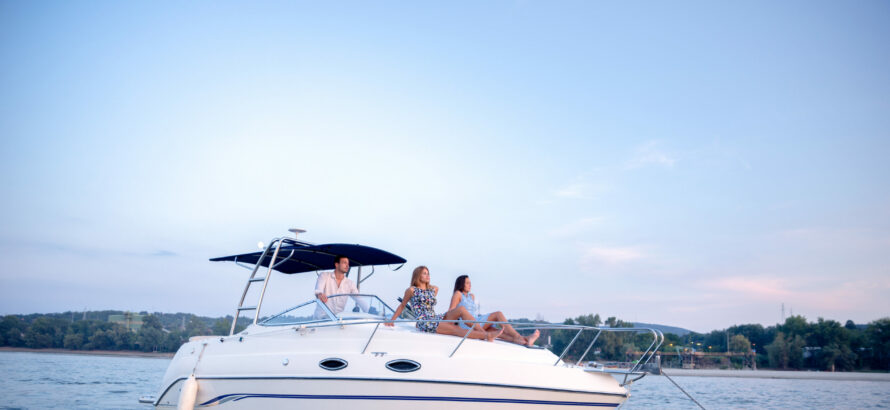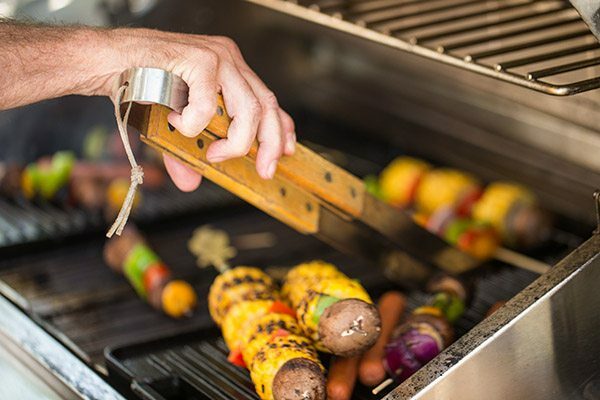There’s no denying motorcycle road trips can be a fun-filled adventure. But for motorcyclists, road tripping is not as simple as gassing up the car and heading off to your destination. There’s also a big difference between motorcycling along a local highway on a Sunday afternoon and traversing hundreds of miles on a cross-state journey.
First-time road trips on a motorcycle can be an initiation into new rigors. In a poll of American Motorcyclist Association staff members, some respondents said learning the best ways to approach a long tour can take years of trial and error. AMA staffers offer a range of insider tips, such as “carry a backpack hydration system so you can drink while you ride” and “a nap can do wonders on a long day.”
Without the luxury of space, packing what you need for a trip on your bike can be even more challenging. We compiled a list of motorcycle trip planning essentials from experienced riders and the Harley Davidson website.
So, before you head on down the highway, here are 26 things you should consider:
1. Watch out for fatigue
Safety is, of course, a big issue, with fatigue a major factor in accidents. According to rider information published by the Alaska Department of Motor Vehicles, “Riding a motorcycle is much more tiring than driving a car. When you plan a long trip, bear in mind that you’ll tire much sooner than you would in a car.”
With enough planning and preparation, while staying mindful of what is potentially in store during your daily rides, your trip can be a safe and enjoyable experience filled with all the reasons you ride in the first place. Make sure to follow motorcycle safety tips so you can stay alert.
2. Take practice rides
The road can seem never-ending when you’re on a long trip. Six hours on a bike may be doable for the experienced road-tripper, but if your previous record is two hours that extra four can seem like a marathon. Get accustomed to longer periods on a bike by taking practice rides beforehand to help you acclimate to long-distance riding.
Practice runs will make you realize the importance of getting comfortable in your seat. Once you’re on the road and moving, you don’t have the luxury of changing positions as you would in a desk chair or car seat. The standard seat that came with your motorcycle may not be the best for long-term sitting. Consider changing your seat before the trip for a more comfortable model. You can also adjust your handlebars and add a back rest and foot pegs, which will help reduce the likelihood of an achy back and stiff limbs.
3. Invest in a good windshield
If you don’t have one already, consider installing a windshield. The feel of the wind may be one of the pleasures of the open road, but riding for several hours at a stretch at 60 to 70 miles per hour can tire you out. With a good windshield, you won’t have to constantly fight the wind, helping you save your strength to keep moving comfortably down the road.
Even with a windshield and helmet, your eyes can dry out and get irritated by all the dust and dirt flying through the air. So carry eye drops and use them liberally.
4. Take breaks
Make sure to take plenty of breaks. Rest your back, stretch your legs and drink water to keep your reaction times sharper. Know your limits, and be proactive by stopping every 60 to 100 miles.
5. Check your bike
First and foremost, make sure everything on your bike is in 100% working order. It’s wise to have it serviced before you leave – fluids changed, valves calibrated, fuel system cleaned, electrical system checked, bulbs changed and tires checked.
6. Stay on the road with a tire plug kit
Carry a tire-plug kit with a CO2 tire-inflation system or a small pump.
7. Stick to your route with a GPS
Bring a portable GPS system or a map so you can stay on your planned motorcycle route.
8. Practice motorcycle safety: Wear a helmet
When riding, always wear protective motorcycle gear and a full-face helmet for accident and weather protection.
9. Protect your ears with earplugs
Custom earplugs can minimize wind noise and protect your ears.
10. Protect your hands by bringing an extra gloves
It’s wise to bring an extra pair of gloves (summer or winter depending on the season and a waterproof pair) in case your primary pair rips or gets lost.
11. Pack the proper footwear
Make sure you have your riding boots, plus overboots or rain gaiters in case of bad weather.
12. Cool down in warm weather with a neck wrap
If you’re going on a summer road trip, a cooling neck wrap can make riding in scorching temperatures much more comfortable.
13. Keep warm with a heated riding suit
For those who enjoy a winter motorcycle ride, a heated riding suit can help you stay warm and toasty on the road.
14. Stay dry with rain gear
Don’t get caught in the elements without the proper gear. From a rain jacket and rain pants, don’t forget to bring your weather-proof gear along.
15. Protect your eyes with sunglasses or goggles
It’s important to have protective eyewear while you’re out on the road, including sunglasses and rain/night goggles.
16. Keep your luggage dry
If you expect to see rain, waterproof gear isn’t the only thing to worry about. Make sure your belongings stay dry with waterproof luggage.
17. Secure your belongings with bungee cords
Loose baggage on the road can be a motorcyclist’s worst nightmare. Bring along bungee cords and nets to secure luggage and loose items.
18. Bring your backpack or travel bag
Backpacks and fanny packs that allow easy access to necessities (cell phone, map, glasses, etc.) can be a lifesaver on the road.
19. Don’t forget your important documents
Keep your necessary documents, including your ID, insurance and roadside assistance information, in a secure place safe from the elements.
20. Keep your belonging dry with waterproof bags
If you aren’t bringing luggage, at least have trash or zip-top bags to keep items dry.
21. Protect your bike with a motorcycle cover
If you’re planning an overnight trip or an extended stop, bring your motorcycle cover to keep your bike pristine.
22. Bring some essential bike tools
If you know your way around a motorcycle, wrenches, sockets and other tools specific to your bike can help out in a pinch.
23. Don’t forget the miscellaneous tools
Tools such as air pumps, flashlights or headlamps, hazard lights, cable ties, duct tape, Swiss Army knife and more can be helpful on a road trip.
24. Bring a first aid kit
It’s always a good idea to carry a basic first aid kit that can help tend to minor injuries.
25. Pack plenty of water
Staying hydrated on the road is important. Bring at least 2 gallons of water so you never get thirsty.
26. Wear winter motorcycle gear for cold weather trips
Wearing the proper clothing can make all the difference in staying warm throughout the winter, and that is particularly true when you’re on a bike. A full-head helmet, warm gloves, riding boots, base layers, and heated gear are some of the things you should have on your list.
These items are important to pack, but completing an approved safety course can prepare you for a long road trip on your bike and could save you money on your motorcycle insurance policy.
Also, make sure you consider the distance. If you find yourself on a scenic two-lane highway, 150 miles may be all you need to accomplish for the day. You don’t want to turn your trip into an endurance test. Part of the point of a road trip is to stop and enjoy the scenery and the people you meet along the way.



